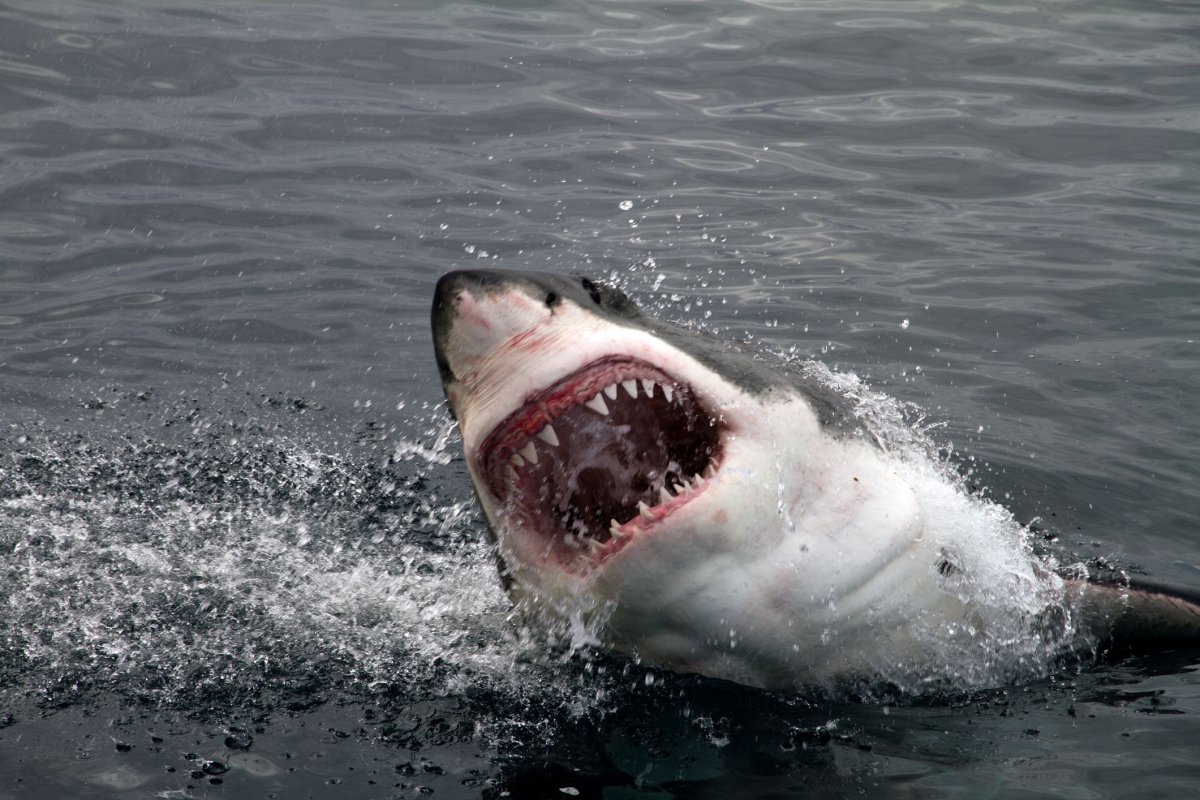Researchers are unravelling the enduring mystery of why a population of great white sharks off the coast of California appears to migrate en masse to a large, seemingly barren stretch of ocean in the middle of the Pacific every winter and spring.
A team from the Monterey Bay Aquarium, Stanford University, and other institutions, traveled to the 160-mile-wide region halfway between Baja California and Hawaii, which has come to be known as the "White Shark Cafe," in order to understand why this annual pilgrimage occurs, The San Francisco Chronicle reported.
Scientists have long been puzzled as to why the great whites continually visit this area because, at first glance, it appears to be devoid of the prey that they usually eat. It's an especially unusual move given that the sharks have to leave food-rich waters along the West Coast before traveling for around a month to get to the Cafe.
But during their expedition, the researchers found clues as to why the sharks flock to the Colorado-sized region. They documented surprising behavior in the animals indicating that a poorly understood section of the ocean—known as the "mid-water," which sits just above the complete darkness of the deep sea—is filled to the brim with small animals which attract larger creatures that the sharks may be feasting on. This suggests the Cafe is not as barren as previously thought.
"The story of the white shark tells you that this area is vitally important in ways we never knew about," Salvador Jorgensen, leader of the expedition from the Monterey Bay Aquarium, told the Chronicle. "They are telling us this incredible story about the mid-water, and there is this whole secret life that we need to know about."
The team made their preliminary findings after tagging 36 great whites with tracking equipment, in addition to other oceanographic methods.
As the sharks made their way to the Cafe, they occasionally made dives to depths of around 3,000 feet. Normally, these depths would be too cold and pressurized for the sharks to digest food, but the researchers found that they were diving through warm water currents, indicating they may be hunting for prey.
When they reached the Cafe in winter, the sharks continued making dives of depths of up to 1,400 feet in the daytime and 650 feet at night. In April, the researchers noticed that the male sharks started acting differently, making huge V-shaped movements in the water, up to 140 times a day. Meanwhile, the females continued making the same dives.
This distinction between the genders is yet to be explained. It could be that the males and females are eating something different, or the behavior could be linked to mating in some way.
Nevertheless, the researchers say it's clear that the mid-water layer is extremely important to the sharks. "They are swimming in these layers, tracking [prey] day and night," Jorgensen said. "It's a game of hide-and-seek."

When they are not at the Cafe, this isolated group of great white sharks spends around half of the year off the coast of California and Baja California, Mexico, according to conservation non-profit Oceana.
Great whites are found all over the world—usually in temperate coastal waters with an abundance of fish and marine mammals—with particular concentrations near South Africa, Australia/New Zealand, the North Atlantic and Northeastern Pacific, according to the Encyclopedia Britannica. But despite the sharks' global distribution and prominent public image, surprisingly little is understood about their life and behavior.
Uncommon Knowledge
Newsweek is committed to challenging conventional wisdom and finding connections in the search for common ground.
Newsweek is committed to challenging conventional wisdom and finding connections in the search for common ground.
About the writer
Aristos is a Newsweek science reporter with the London, U.K., bureau. He reports on science and health topics, including; animal, ... Read more
To read how Newsweek uses AI as a newsroom tool, Click here.








